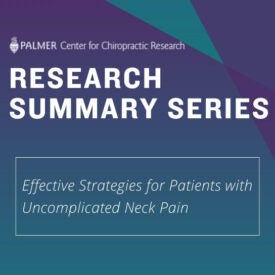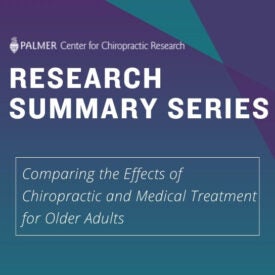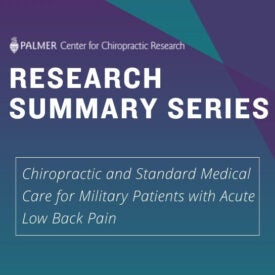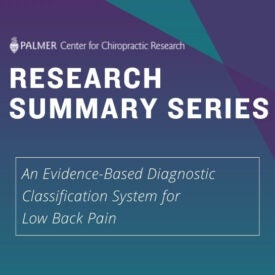Chiropractic treatment and home exercise with professional instruction groups were both more effective at treating neck pain than prescription medication in both the short and long-term. Home exercise with educational instruction from a trained provider was the least expensive treatment.

This study provides evidence that chiropractic care is beneficial for older adults in the important areas of self-rated health and daily living function. Further defining key therapeutic levels, or dose, will help us understand better the best amount of care that confers the most protective benefit from functional decline and self-rated health that accompanies chiropractic care for these individuals.

Adding chiropractic to standard medical care resulted in significant improvement over the current standard care model for treating acute low back pain in active-duty men and women. This evidence supports the idea that collaborative treatment including chiropractic care can result in improved health outcomes.

In this article, authors describe how they assembled current literature findings into a standardized, user-friendly diagnostic classification system incorporating an evidence-based diagnostic category checklist for use in both chiropractic research and in general clinical practice.

